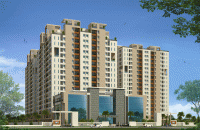Buoyant
demand drives average housing prices, 10% YoY growth across eight major Indian
cities: CREDAI – Colliers - Liases Foras | Housing Price-Tracker Report Q4 2024
· Housing
prices on the upswing for the 16th consecutive quarter
· Delhi
NCR saw more than 30% annual housing price rise, highest rise amongst top 8
Indian cities
· Overall
unsold inventory dropped 5% on an annual basis
· Pune
saw the highest annual drop in unsold inventory at 14%, closely followed by
Hyderabad with 13% decline
Mumbai, India, 25 February 2025: Average housing prices across the top eight markets in India witnessed a 10% YoY rise during the last quarter of 2024, led by healthy demand momentum and positive market sentiment.
Interestingly,
average housing prices have been on a rising spree for the 16th
consecutive quarter, starting 2021. Price appreciation was evident in all the
eight major cities, with Delhi NCR witnessing the highest rise at 31% YoY
growth, followed by Bengaluru at 23% YoY rise during Q4 2024. While affordable
housing segment will continue to form the bulk of housing sales, demand within
luxury and ultra-luxury segments can amplify further in 2025. Traction in these
segments is likely to drive average housing prices upwards across most major
residential markets of the country in the next few quarters.
Overall unsold
inventory continued to decline for the fourth consecutive quarter and dropped 5%
annually during Q4 2024 backed by healthy demand. At the end of December 2024,
unsold inventory at the India level stood below 10 lakh housing units for the
first time in the last two years. MMR, with a share of ~40%, continued to
account for a majority of the unsold inventory. Notably, Pune saw the highest
annual drop in unsold inventory at 14%, closely followed by Hyderabad with 13%
decline.
Mr. Boman Irani,
President of CREDAI National stated, “The sustained growth in housing prices underscores
the strong confidence among homebuyers, driven by a preference for spacious
living and lifestyle upgrades. With evolving consumer aspirations, we are
witnessing increased demand for larger homes, better amenities, and integrated
living spaces. This positive sentiment has translated into steady sales
momentum across segments. While evolving preferences and lifestyle upgrades
remain key motivators, cost pressures in construction and land acquisition are
also significantly contributing to pricing trends. As we look ahead, a
potential reduction in interest rates could further boost affordability and
drive even greater demand. This positive trend is expected to continue and
thrive through the year, making it an opportune time for homebuyers to invest
in real estate."
"Overall housing
prices across the top eight Indian cities surged 10% on an annual basis in
2024. Prominent markets such as Delhi NCR and Bengaluru saw the steepest rise
in average housing prices amidst rise in demand for luxury and ultra-luxury segments.
Furthermore, the recent repo rate reduction along with government initiatives
to fund stressed residential projects will provide boost to affordable housing
segment. Going ahead, with elbowroom for further reduction in benchmark lending
rates, most cities are likely to witness traction in housing sales across
categories. Resultantly, average residential prices can potentially increase at
similar levels in 2025 on an annual basis. “ added, Badal
Yagnik, Chief Executive Officer, Colliers, India.
Pan India residential price trends (in
INR/sq ft)-
|
City |
Average Price Q4 2023 |
Average Price Q1 2024 |
Average Price Q2 2024 |
Average Price Q3 2024 |
Average Price Q4 2024 |
QoQ Price change (Q4 2024 vs Q3 2024) |
YoY Price change (Q4 2024 vs Q4 2023) |
|
Ahmedabad |
6,737 |
7,176 |
7,335 |
7,640 |
7,725 |
1% |
15% |
|
Bengaluru |
9,976 |
10,377 |
11,161 |
11,743 |
12,238 |
4% |
23% |
|
Chennai |
7,701 |
7,710 |
7,690 |
7,889 |
8,141 |
3% |
6% |
|
Delhi NCR* |
9,170 |
9,757 |
11,214 |
11,438 |
11,993 |
5% |
31% |
|
Hyderabad |
11,083 |
11,323 |
11,290 |
11,351 |
11,351 |
0% |
2% |
|
Kolkata |
7,912 |
7,727 |
7,745 |
7,616 |
7,971 |
5% |
1% |
|
MMR** |
20,047 |
20,361 |
20,275 |
20,438 |
20,725 |
1% |
3% |
|
Pune |
9,185 |
9,448 |
9,656 |
9,890 |
9,982 |
1% |
9% |
Source: Liases Foras,
Colliers
All the prices are based on carpet area
*NCR- National Capital Region | **MMR-
Mumbai Metropolitan Region
“Sales witnessed a marginal decline, led
by moderated new launches in the last quarter. We anticipate a growth in
affordable and mid-segment supply and sales going forward, which will change
the composition of supply, which has been skewed towards the luxury segment for
the last four years”, said
Pankaj Kapoor, Managing Director, Liases Foras.
Within the top cities,
Delhi NCR saw the highest rise in housing prices at 31% YoY
Delhi NCR witnessed the highest rise
amongst India's top eight cities, with average housing prices soaring by 31%
YoY. This price rise in the city is attributable to the strong sales momentum,
particularly in luxury & ultra-luxury segments. While Dwarka Expressway
witnessed the highest annual price rise at 58%, Greater Noida too witnessed
impressive growth of 52% YoY. Going forward, the upcoming Jewar International
Airport, will continue to spur residential prices in the catchment areas.
Moreover, annual price appreciation was
notable in Bengaluru, Ahmedabad and Pune as well, led by healthy demand spurred
by infrastructure upgrades in key areas of these cities. Prominent micro
markets such as Periphery & Outer West in Bengaluru, and Baner & Nagar
Road in Pune saw significant traction in ready-to-move-in units.
Resultantly, average housing prices in these micro markets increased by up to
15% YoY during Q4 2024.
Pune witnessed highest YoY drop in
unsold units at 14%, MMR witnessed a drop in inventory levels after nearly 3
years
“The demand for luxury
and ultra-luxury segments was particularly strong throughout 2024. The share of
spacious dwelling units in overall housing sales have been on the rise,
particularly in cities such as Bengaluru, Delhi NCR and Pune. Average housing
prices of 3-4BHK apartments in these cities increased by up to 34% YoY during
Q4 2024. Evolving lifestyles, desire for upscale amenities, a growing
population of HNIs, and perception of luxury properties as status symbols &
investment opportunities will continue to drive housing sales in premium categories
in the next few quarters,” said Vimal Nadar, Senior Director and Head of Research,
Colliers India.
































